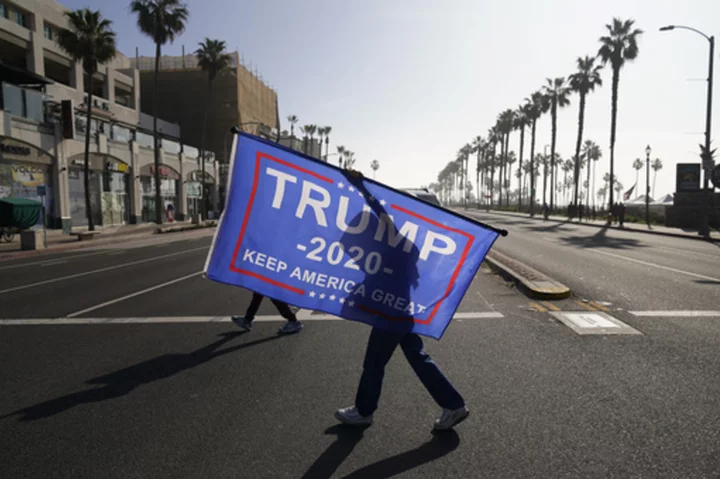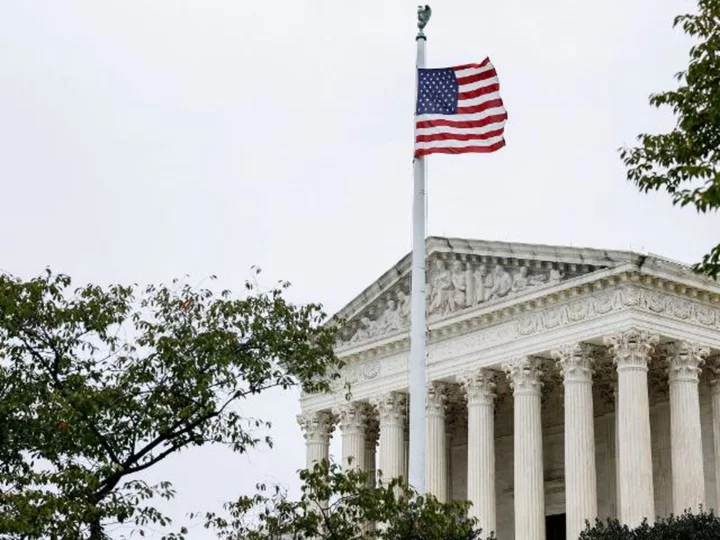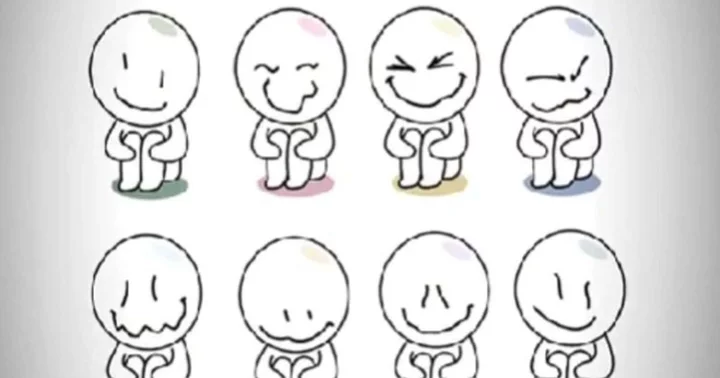LOS ANGELES (AP) — Few corners of the U.S. may be less hospitable to Donald Trump than California, where he lost by more than 5 million votes in the 2020 election. But as the former president seeks to return to the White House, the liberal bastion may give him an unlikely boost.
A state GOP rule change has opened the possibility that Trump could sweep each of the state’s 169 delegates on March 5, when California is among more than a dozen states participating in the so-called Super Tuesday contests. With Trump already leading his rivals in many state and national polls, a dominant performance in California could move him much closer to the GOP nomination.
“This race is quickly consolidating,” said GOP fundraiser Charles Moran, a Trump delegate in 2016 and 2020. With a win in California, he added, “I truly think Trump could take the nomination on Super Tuesday — then this is over.”
With less than four months before the Iowa caucuses officially kick off the GOP nomination process, the dynamics of the race could still change. But Trump is keeping a close eye on the state, where his most prominent Republican rivals will gather without him on Wednesday for the second presidential debate. While Trump is skipping the event, he has made sure to be in California on Friday to appear at the state’s GOP convention, where many of the people who will ultimately serve as delegates will be in attendance.
In what would be an ironic twist, the state where the former president is widely loathed outside his conservative base could help him tighten his grip on the Republican White House nomination.
Trump, who is facing criminal charges in four separate cases, has long had a conflicted relationship with California, the nation’s most populous state, where Democrats haven’t lost a statewide election since 2006 and outnumber registered Republicans by about 2-to-1.
California was home to the so-called Trump resistance during his time in office, and Trump often depicts California as representing all he sees wrong in America. As president, he called the homeless crises in Los Angeles, San Francisco and other big cities disgraceful, and threatened to intercede — faulting the “liberal establishment” for what he described as a “terrible situation.”
He berated state Democrats who supported funding health care for some adults who entered the U.S. illegally, and challenged California’s authority to reduce car emissions. Then-state Attorney General Xavier Becerra filed more than 50 lawsuits against the Trump administration, targeting initiatives on immigration, health care and the environment.
Still, the Trump National Golf Club Los Angeles sits on the Pacific coast south of the city. And even in losing California in a landslide in 2020, Trump received over 6 million votes — more than any Republican presidential candidate before him — with his margins topping 70% in some rural counties that typically favor conservative candidates.
California probably will be an afterthought in November 2024 — the state’s lopsided electorate makes it a virtual lock for Democrats on Election Day. You’d have to go back to 2000 to find a Republican nominee pushing hard to win California, when George W. Bush invested millions in the state then lost to Democrat Al Gore by 12 points.
Under the rule change, a Republican presidential candidate who pulls in more than 50% of the primary vote would be awarded all 169 delegates. If no candidate hits that threshold, delegates will be awarded proportionally.
Such a winner-take-all rule didn’t exist in recent presidential elections in the state. Previously, the California GOP primary amounted to dozens of separate races on a single day — one in each congressional district across the sprawling state, and then one statewide. The winner in each district collected three delegates; the candidate who received the largest number of votes statewide claimed a bonus of about a dozen more.
That created a competitive environment where Democratic Rep. Nancy Pelosi ’s district in San Francisco awarded the same number of GOP delegates as a rural, conservative heartland district.
When the change was adopted in late July, state party Chairwoman Jessica Millan Patterson predicted it would lure GOP presidential candidates to California to campaign, drive turnout and make the state relevant in picking the party’s 2024 nominee.
But others believe it has had the opposite effect, stifling competition in a state where buying media advertising across half a dozen markets comes at a huge, prohibitive cost. The vastness of the state, home to nearly 1-in-8 Americans, makes it hard to get to all the regions. The previous guidelines encouraged candidates to target specific districts — now, one candidate can collect them all.
“The effect of the change has been to effectively terminate the Republican primary in California,” said conservative activist Jon Fleishman, a former executive director of the state GOP.
The state party — strongly influenced by House Speaker Kevin McCarthy of Bakersfield, a Trump loyalist — “shifted everything to help Donald Trump,” Fleishman said.
In a sign of the fallout, a super PAC supporting Florida Gov. Ron DeSantis, Never Back Down, recently curtailed operations in California. The committee says it had knocked on over 100,000 doors over several months but has shifted its focus elsewhere.
“The Trump team came in to rig the rules in their favor,” Ken Cuccinelli, who was deputy secretary of Homeland Security during the Trump administration and founded the PAC, said in a statement.
Similar rule changes seen as benefiting the Trump campaign are playing out elsewhere, including in Michigan and Nevada, where some GOP leaders fear changing guidelines could confuse voters. The California rules are expected to be challenged at a state party convention next week, though reversing course is seen as unlikely.
"Nobody is seriously trying to repeal it," said longtime conservative activist Steve Frank.
The home turf of Presidents Richard Nixon and Ronald Reagan, California was once reliably Republican in presidential elections. Pronounced demographic shifts, particularly a boom in the Hispanic population, and a shifting economy that included the collapse of the defense industry, changed everything.
The number of Hispanics, Blacks and Asian-Americans combined has outnumbered whites in California since 1998, and Latinos alone have outnumbered the white population for about a decade. Most new voters are Democrats or left-leaning independents. Democrats hold every statewide office and dominate the Legislature and the congressional delegation.
California’s Republican Party has been in decline for years, and GOP voters account for just 23.8% of the statewide total, slightly ahead of independents. Infighting between conservatives and moderates persists, and dueling factions are expected to brawl at the state party convention over a proposed rewrite of the party platform, moving it toward the political center.
The last Republican to win a presidential contest in California was George H.W. Bush, in 1988. Since then, it's been a long string of Election Day misery: John McCain, the 2008 GOP nominee against Barack Obama, boasted about competing in California but lost by 24 points. Mitt Romney suffered a 23-point loss to Obama in 2012. Trump lost there to Hillary Clinton in 2016 by 30 points.
However, pockets of Republican strength remain, including in the vast Central Valley farm belt and the so-called Inland Empire running east and north of Los Angeles. Despite his penchant for California-bashing, Trump won 23 of the state's 58 counties in the state in 2020, mostly in the state's farm belt and rural interior.
Once the primary is over, California's relevance may lie in a string of competitive House seats, including several in Orange County southeast of Los Angeles, which are expected to play into control of the closely divided chamber next year.









